What is a glucose spike?
The causes, symptoms, effects, and how to manage them for better metabolic health.
Christina Stiehl,
Managing Editor
Pamela Nisevich Bede, MS, RD, CSSD, LD,
Medical Affairs
Published:
December 09, 2024
Updated:
August 13, 2025
Read time:
10 minutes

A glucose spike, also known as a blood sugar spike, is a sharp, marked rise in the amount of glucose in your blood. This is typically followed by a comparable decline, also known as a glucose dip or crash. While it’s normal for your glucose to fluctuate throughout the day, a true spike is different.
Spikes occur for a myriad of reasons, most commonly after eating an influx of carbs and/or sugar (more on that later). But they can also arise due to physiological and psychological stress,1 intense exercise,2 caffeine intake,3 certain medications, and other factors.
Let’s break it down
Glucose spikes, also known as blood sugar spikes, happen when you have more glucose in your bloodstream than your cells can take in for energy.
Glucose spikes (and the crash that typically follows) can lead to hunger,4 cravings,5 fatigue,6 and impact mood7 and sleep.8 This is why managing spikes day-to-day has benefits.9
Over time, consistent glucose spikes above the healthy glucose range can increase your risk of developing insulin resistance,10 type 2 diabetes,11 and heart disease.12,13
You can avoid or lessen glucose spikes by implementing certain lifestyle habits. Lingo, which is a continuous glucose monitor (CGM), can help you monitor your spikes and establish healthy habits to keep your glucose (blood sugar) steady.
Start Lingo today for just £59
Learn how your body responds to food and exercise with a 2-week plan*, no commitment.
Buy now
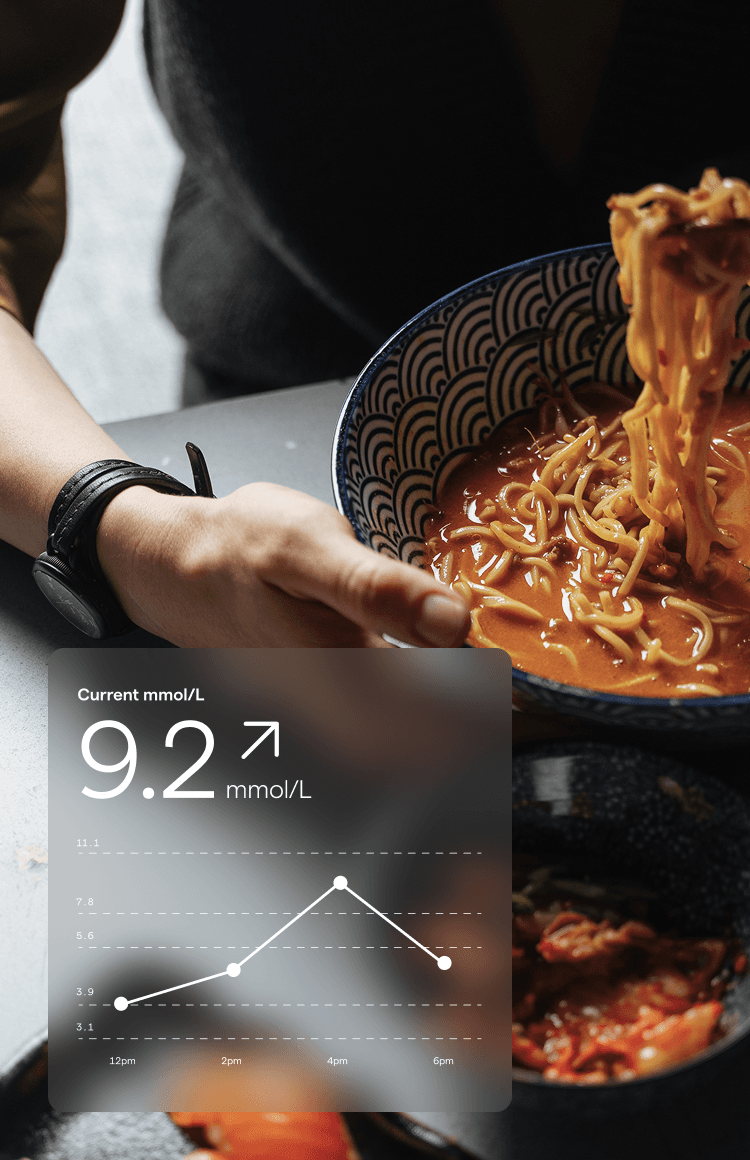
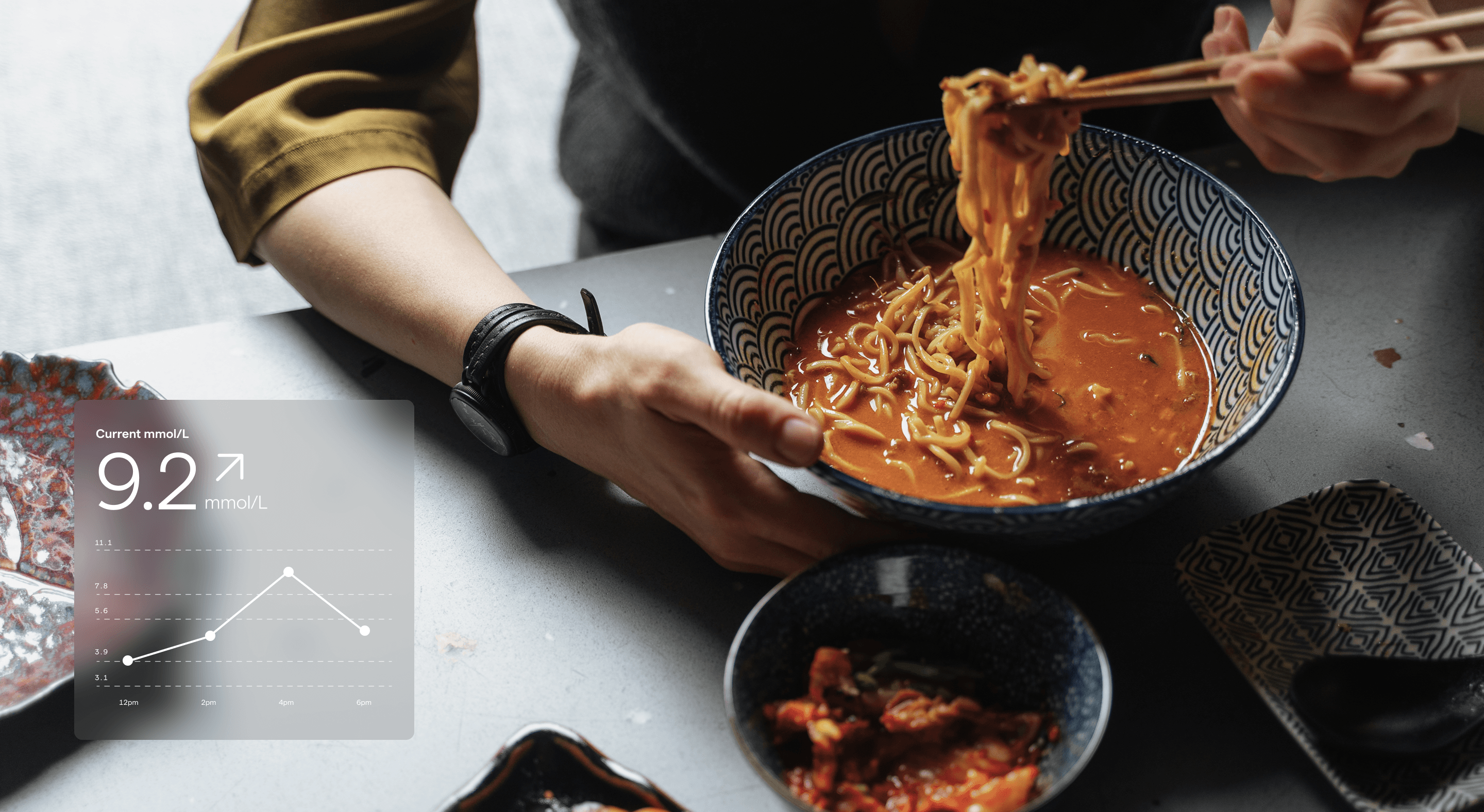
Eating a carb-heavy meal can lead to a glucose spike. Values above 7.8 mmol/L are often categorised as spikes.
What happens during a glucose spike?
After you eat, your body breaks down food and drink to use for energy or to be stored. Of the three macronutrients — carbohydrates, protein, and fat — carbohydrates are the quickest to digest.14,15 Carbohydrates are converted into glucose, which is one of your body’s main sources of energy.
Glucose circulates via the bloodstream to get into cells where it’s used for energy. Any glucose not needed as an immediate source of fuel is shuttled to the liver, muscles, or fat cells and stored for later use.
Sometimes the amount of glucose circulating in your body surpasses what’s needed for energy. When glucose becomes too concentrated in the blood, this is referred to as a glucose spike or a blood sugar spike.
Lingo is a continuous glucose monitor (CGM) that measures your glucose 24/7 via interstitial fluid (the thin layer of fluid surrounding the cells of the tissue just below your skin), unlike traditional blood glucose meters that require a finger prick blood sample.
Lingo displays glucose values in millimoles per litre (mmol/L), which is the standard measurement in the UK. With Lingo, your target glucose range is typically 3.9-7.8 mmol/L — considered the “healthy range” — and what metabolically healthy individuals should try and stay within most of the time.11
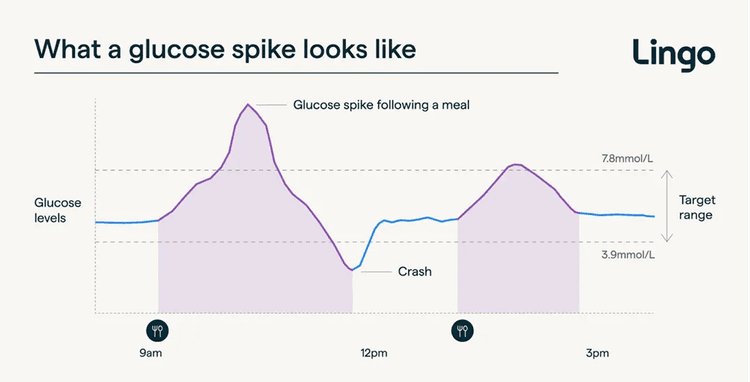
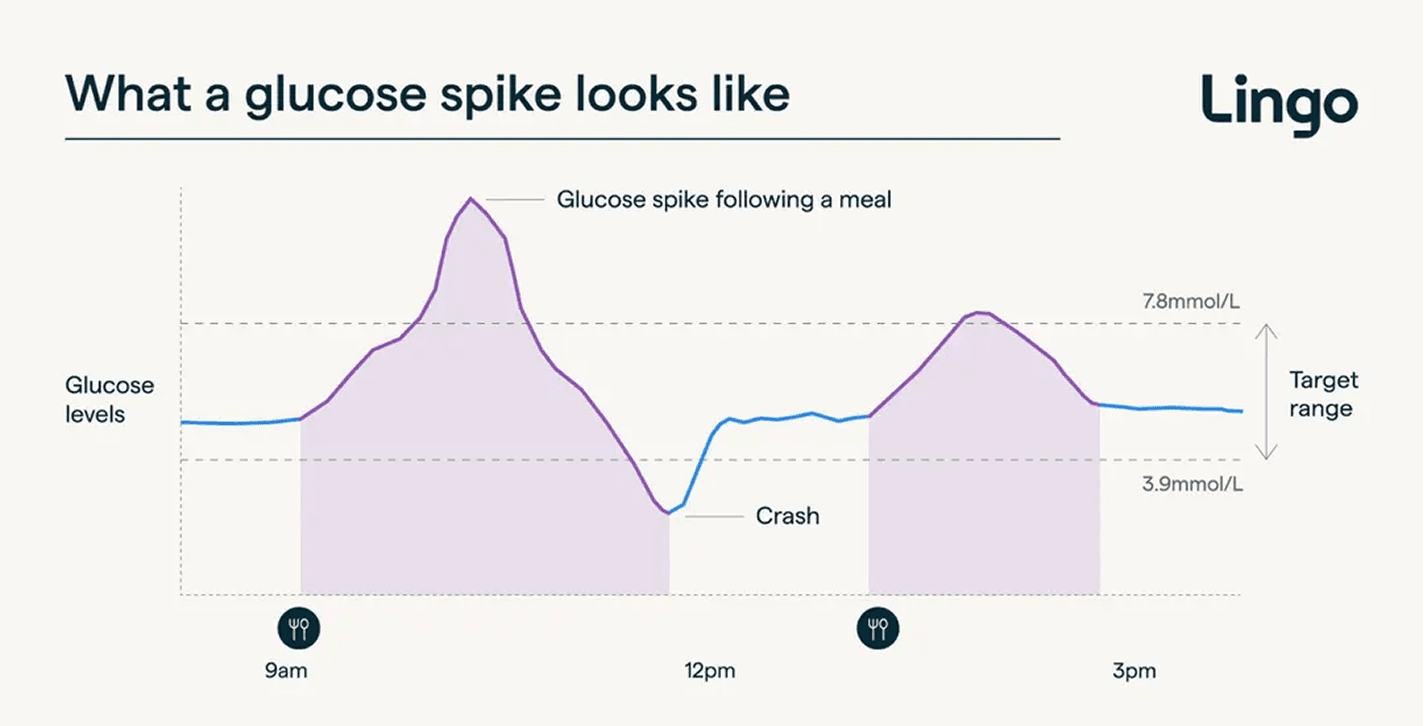
When glucose becomes too concentrated, this is referred to as a glucose spike. The glucose range for healthy individuals is typically between 3.9-7.8 mmol/L, although it’s normal to be above or below this range occasionally.
Some degree of rise in glucose is completely normal, but consistent spikes, even within the healthy range, can impact your wellbeing.9
If you don’t have diabetes or prediabetes, consistent spikes above the healthy range can still take a toll, including an increased risk for developing type 2 diabetes.11 Over time, consistently high glucose can increase your risk of heart disease.12,13,16,17
Glucose spikes can also be caused by lifestyle factors such as stress1 or following a poor night’s sleep.8 You may experience a glucose spike during intense exercise,2 but in this case, a spike is a good thing.
The good news is there are habits you can implement to help limit or avoid glucose spikes and temper them once they start. Better glucose management can benefit your overall health, including how you feel, your energy levels, hunger and cravings, sleep, mental focus, and more.9
Sometimes the amount of glucose circulating in your body surpasses what’s needed for energy. When glucose becomes too concentrated in the blood, this is referred to as a glucose spike or a blood sugar spike.


Pairing a carb with a source of protein or fat can help limit the glucose impact and reduce the risk of a spike.
What causes glucose spikes?
A glucose spike typically happens after eating something carb-heavy, especially if the carbohydrates are mostly simple carbs (e.g. white bread, pasta, bagel) or sugar.
A glucose spike can also arise if you eat carbohydrates by themselves, what we call “naked carbs.”18 Pairing a carb with a source of protein or fat can help limit the glucose impact and reduce the risk of a spike. 19,20
High-intensity exercise can also cause a glucose spike because it increases adrenaline (the fight-or-flight hormone), which signals to your body that it’s time to break down liver glycogen to glucose.2 This quick influx of fuel can spike your glucose, but as mentioned, this kind of glucose spike is a good thing.
In the same way that exercise spikes your heart rate temporarily but provides benefit in the long run, a temporary blood glucose rise with exercise is an example of hormesis — a short-term stress that enables long-term adaptation.21
Other lifestyle factors may influence glucose, such as stress and poor sleep. Like with intense exercise, an increase in stress triggers the stress hormones cortisol and adrenaline, which can raise your glucose as your body needs quick energy to enter into fight-or-flight mode.1 Not getting enough sleep can disrupt your body’s ability to use glucose, causing future health concerns.8
Over time, unhealthy glucose levels can lead to metabolic issues like prediabetes or type 2 diabetes,11,22 which is when your body becomes resistant to insulin and loses its ability to efficiently remove glucose from the blood into your cells to use for energy.
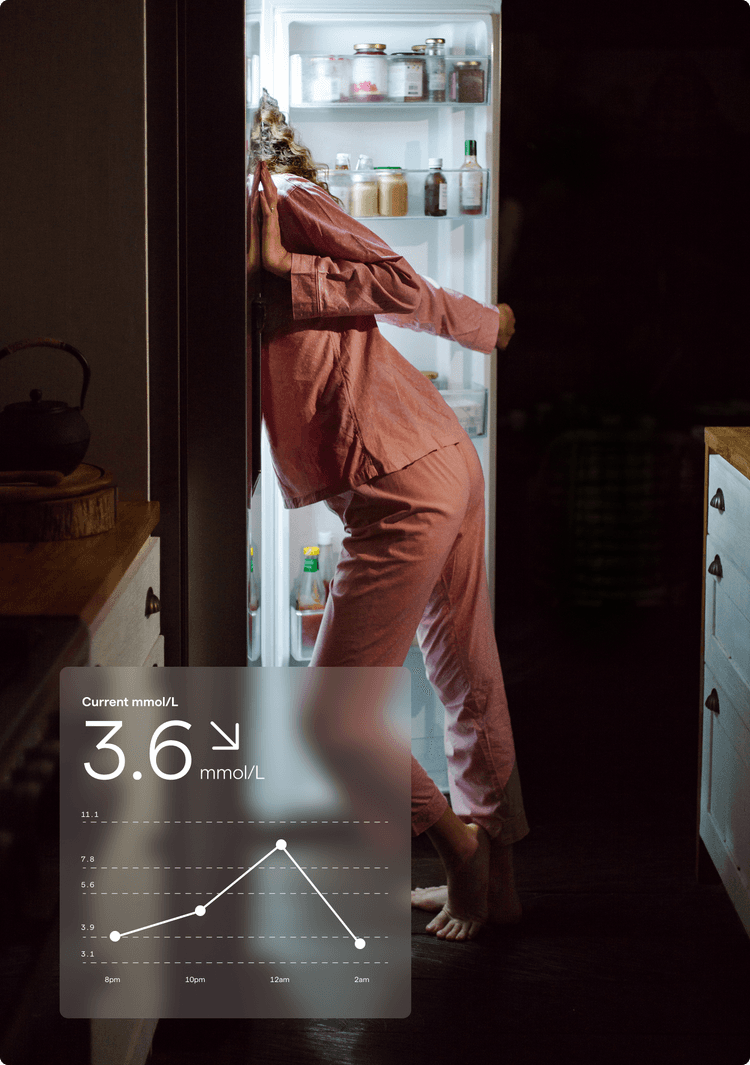

After a glucose crash, your body typically craves more simple carbohydrates and sugar for a quick energy boost.
Symptoms of a glucose spike
Glucose spikes within the healthy range may not produce any immediate symptoms. However, the crash that often follows can lead to feelings of hunger,4 cravings,5 decreased focus,6 and may impact your mood.7
Spikes outside of the healthy range may trigger physiological symptoms, such as fatigue, thirst, blurred vision, or increased urination, but these have mainly been reported in people with prediabetes or diabetes.23
After you eat something with a lot of carbs, moving your body can help temper a glucose spike.24 As little as 10 minutes of a brisk walk25 or bodyweight exercises like squats, jumping jacks, lunges, or calf raises may be all you need to prevent or lessen a glucose spike.26
It’s a good idea to drink plenty of water and opt for something with more protein at your next meal.
After you eat something with a lot of carbs, moving your body can help temper a glucose spike.24
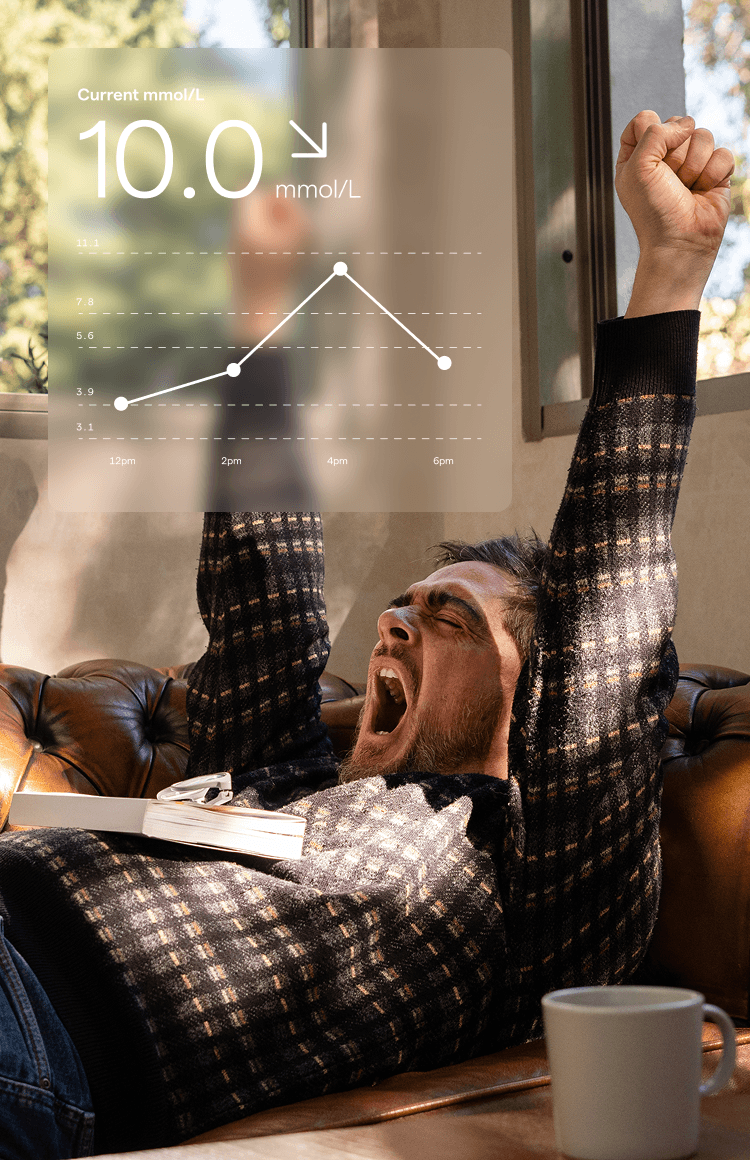
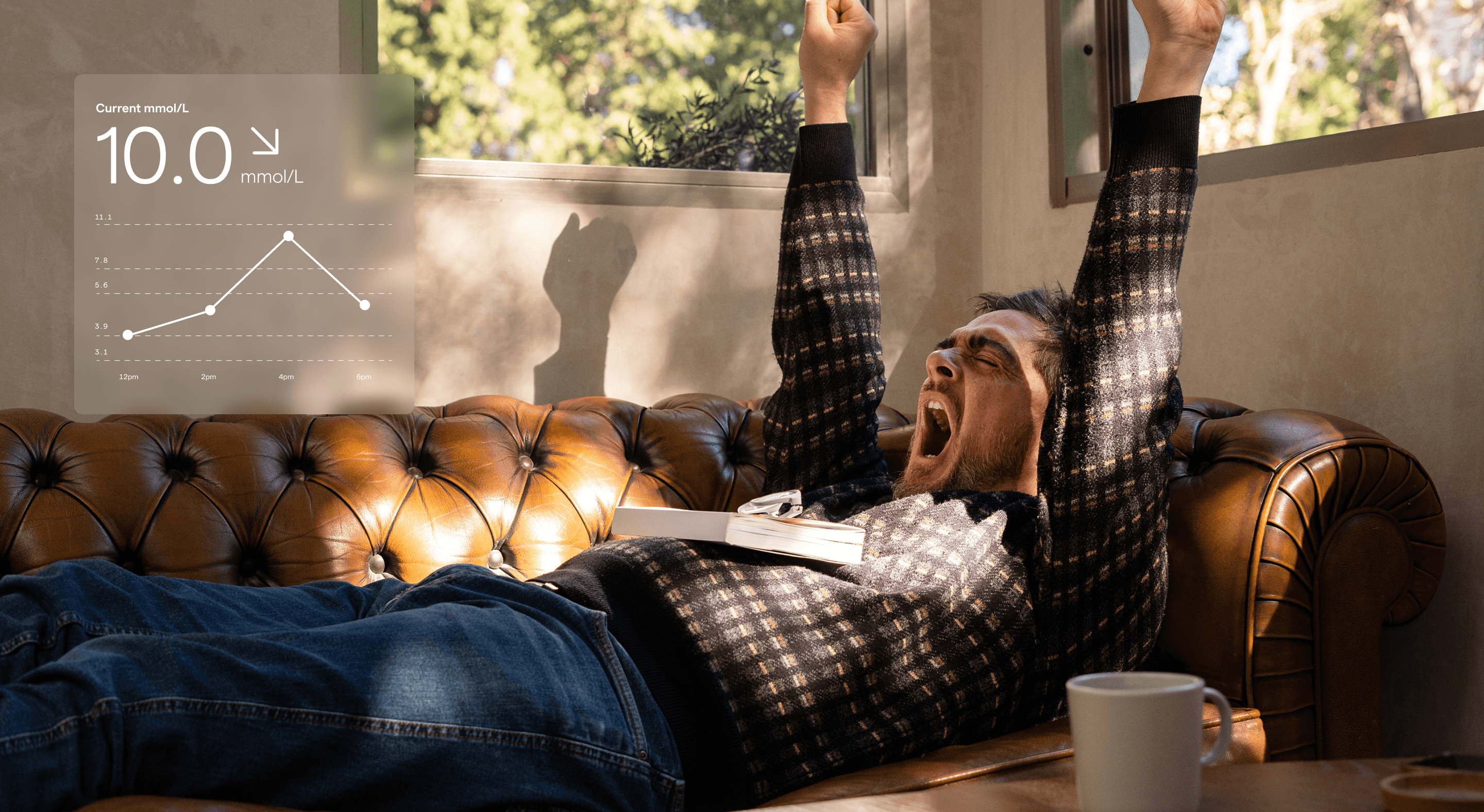
Glucose spikes can cause hunger, cravings, feelings of fatigue, impact mood, and interfere with your sleep.
The impact of glucose spikes
In the short term, glucose spikes can negatively impact your sleep, energy, mood, and focus9 — noticeable effects that interfere with daily life.
Other complications from frequent spikes and consistently elevated glucose can occur behind the scenes, such as significantly affecting the health of blood vessels and cells. Chronic spikes can set the stage for metabolic dysfunction.27,28,11
Elevated glucose outside of the healthy range increases your risk for developing insulin resistance10 and type 2 diabetes.11 It also causes inflammation28 and impacts your blood vessels.29
Additionally, consistently elevated glucose increases the risk of heart disease.12,13,16,17 This is why it’s important to manage the number and size of glucose spikes.
With Lingo, you can learn to limit the size and frequency of spikes and make changes to improve your overall wellbeing. Research shows that time in the healthy glucose range improved among individuals who wore a CGM for just 10 days.30
Elevated glucose outside of the healthy range increases your risk for developing insulin resistance10 and type 2 diabetes.11 It also causes inflammation28 and impacts your blood vessels.29
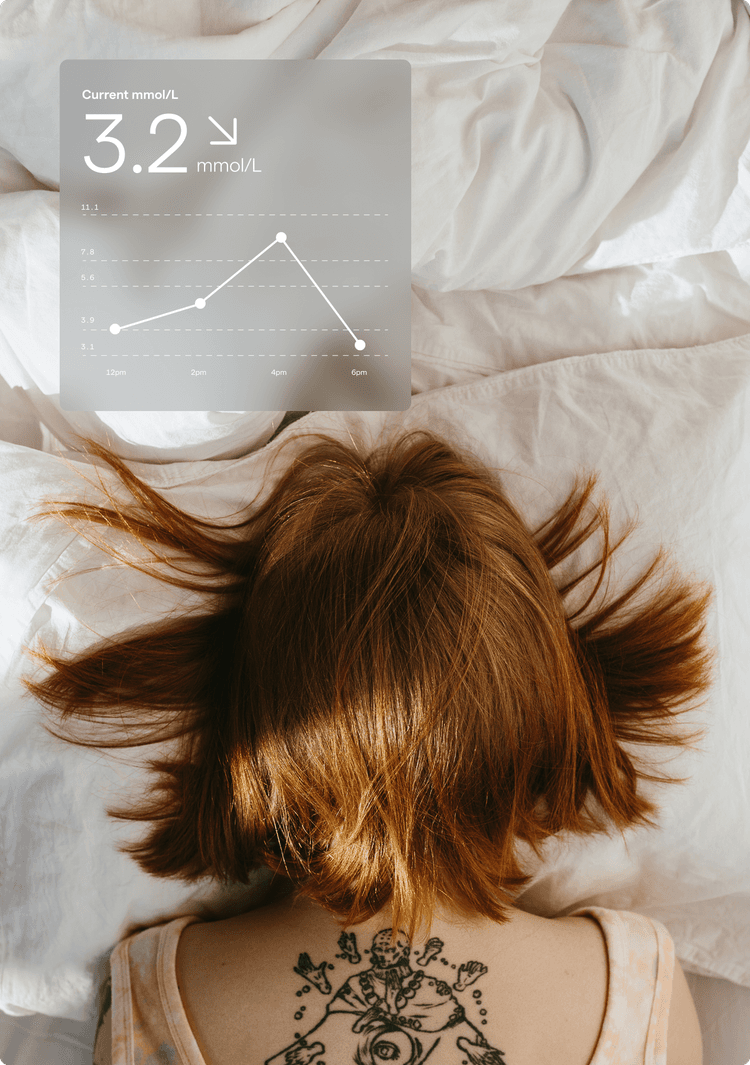

The crash that often follows a glucose spike can lead to feelings of hunger,[4] cravings,[5] decreased focus,[6] and may impact your mood.[7]
How to manage glucose spikes
There are many ways to limit glucose spikes naturally, and the best method is to be thoughtful with your nutrition.
Common sources of spikes include refined carbohydrates, sugars, and sugary drinks (including sugary and carb-heavy alcoholic beverages), so it’s beneficial to limit these choices.
Instead, opt for more complex carbohydrates that have fibre such as vegetables, fresh fruit, brown rice, quinoa, and whole grain bread. Even better, pair your carbohydrates with a source of protein for a macronutrient-balanced option.
Other lifestyle habits that can help keep your glucose steady include getting quality sleep,31 staying physically active,32,24,33 and managing stress.34
Using your own data, Lingo gives insight into your unique glucose responses, tracks your spikes, and helps you understand how your habits impact your glucose levels and metabolic health.

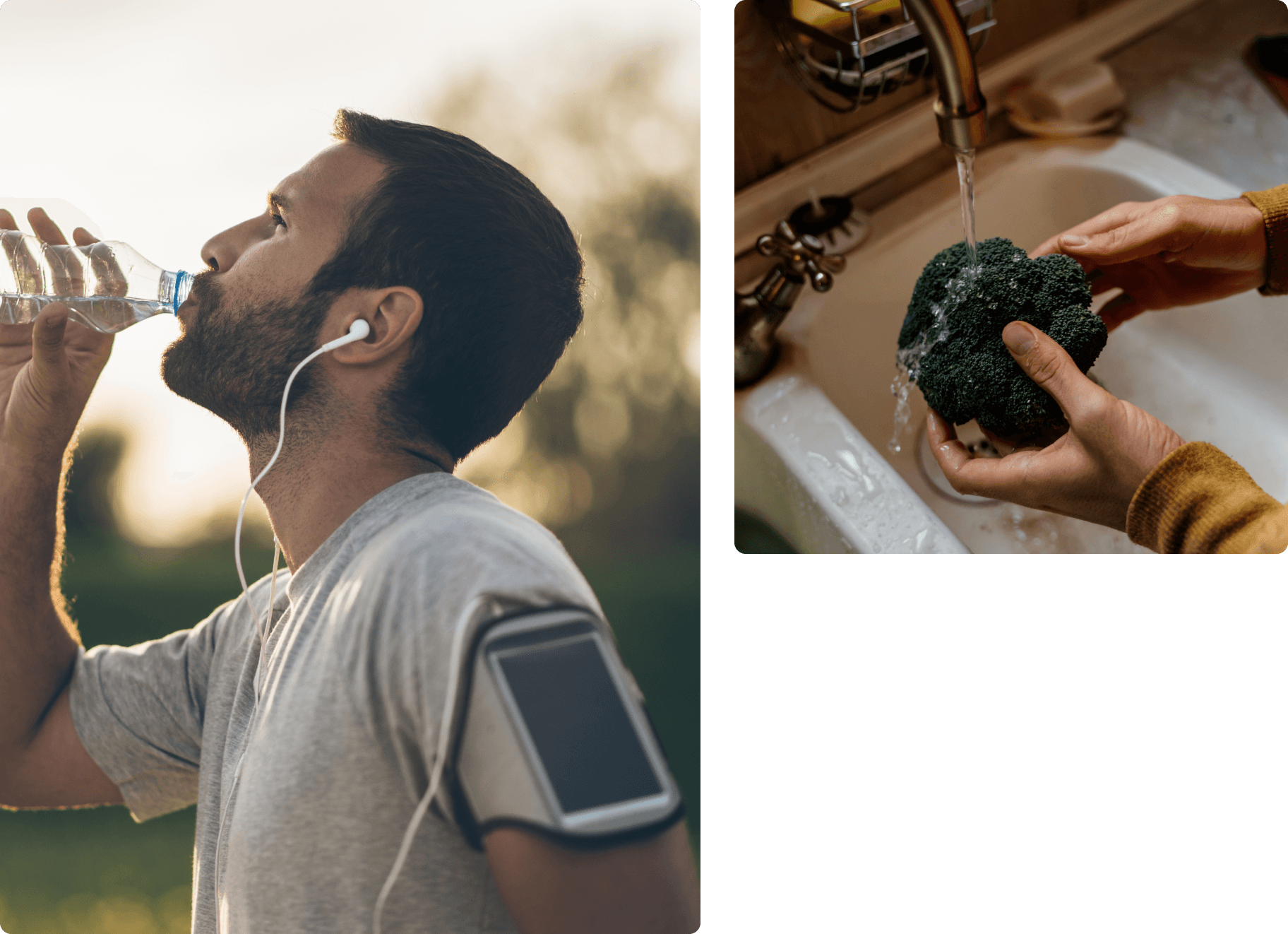
A final note from Lingo
While glucose spikes are normal and occur in healthy individuals, there are health benefits to managing your glucose and reducing the size and frequency of spikes.
Maintaining steady glucose can help improve your metabolic health and give you more energy, better sleep, reduce hunger and cravings, and boost mental focus.9
Using Lingo can help you understand your habits and patterns and work towards limiting glucose spikes.
The Lingo system is not for medical use and intended for users 18 years and older. Lingo is not intended for diagnosis or management of any disease including diabetes.
The Lingo programme does not guarantee that everyone will achieve the same results as individual responses may vary. It is best to speak to your doctor for advice on starting any diet or exercise regime or if you have an eating disorder or a history of eating disorders.
© 2025 Abbott. All rights reserved. The biosensor shape and appearance, Lingo, and related brand marks are marks and/or designs of the Abbott group of companies in various territories. Other marks are the property of their respective owners.
ALB-01688 v2.0
Published:
December 09, 2024
Updated:
August 13, 2025
Read time:
10 minutes


Christina Stiehl is the Managing Editor at Lingo. She graduated from the University of Missouri School of Journalism and has more than a decade of professional editorial experience in the health and wellness industry. Christina has written for top media publications including SELF, PS, Shape, Well+Good, Thrillist, and VICE before pivoting to leading content at health tech companies.


Pamela Nisevich Bede, MS, RD, CSSD, LD, is a certified specialist in sports dietetics and an expert in nutrition communications. Pam earned her Bachelor of Science degree in Dietetics from Miami University and a Master of Science in Medical Dietetics from The Ohio State University. While at Abbott Nutrition, Pam was the Global Nutrition Lead at Zone Perfect Nutrition and Ensure and was previously the Manager of Nutrition Marketing at EAS Sports Nutrition.
A healthy choice for your inbox
Sign up to get science-backed health tips and special offers.
Start Lingo today
for just £59
Learn how your body responds to food and exercise with a 2-week plan*, no commitment.
- 1 Lingo biosensor with minute-by-minute continuous glucose tracking
- Full access to the Lingo app. Designed for iPhone 11 device or later.
Shop now
Free shipping
*No commitment. This plan does not auto-renew (requires an iPhone 11 or later)

